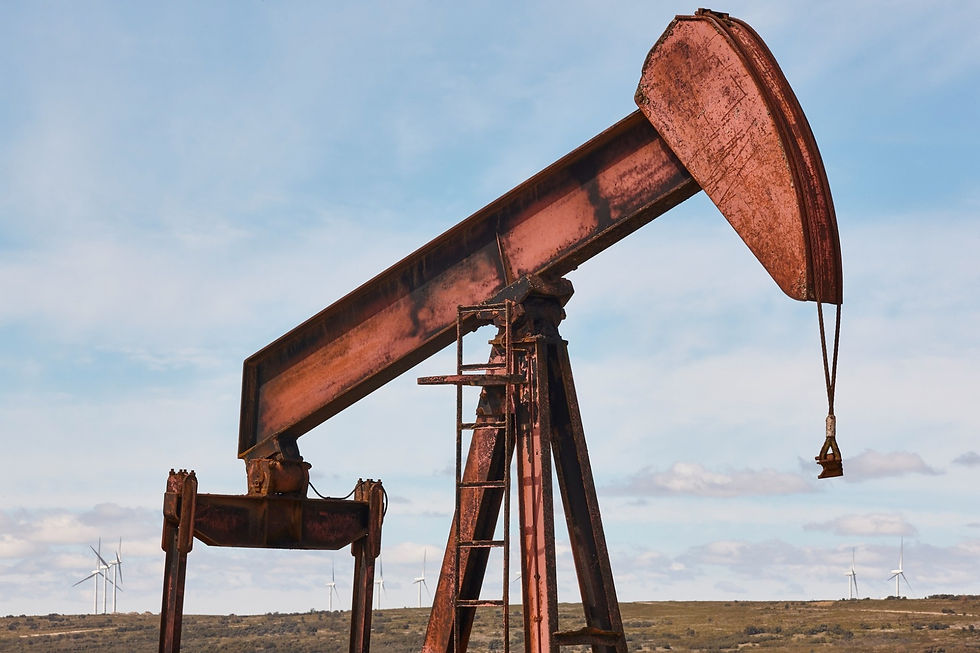MARKET PERFORMANCE
The Benefits and Risks of Investing in Commodities
2025年5月20日
|
3 minutes
Commodities provide exposure to tangible assets and can protect purchasing power during inflationary periods, though they are subject to unpredictable price swings and logistical or financial barriers.

Commodities investing in an increasingly volatile global economy has become a popular diversification and inflation protection strategy. Commodities, which include raw materials like oil, gold, silver, agricultural goods, and industrial metals, are essential to the functioning of global markets. However, like any investment, commodities come with advantages and potential downsides.
Understanding the benefits and why it is risky to invest in a commodity is essential for making informed decisions and building a balanced portfolio.
Benefits of Investing in Commodities
Portfolio Diversification
Commodities typically have a low correlation with traditional asset classes like stocks and bonds. This means that when stock markets experience volatility, commodities may move differently, helping investors reduce portfolio risk through diversification.
Inflation Hedge
Commodities are often considered a natural hedge against inflation. When the prices of goods and services rise, so do the prices of raw materials. For example, during periods of high inflation, gold and energy commodities like oil tend to retain or even increase in value, preserving purchasing power.
Opportunity in Market Shifts
The commodity market can offer return opportunities, but timing is everything. These gains often come during periods of significant disruption, and without a proper strategy, investors can just as easily face losses. Commodities are high-risk, high-reward, so it's essential to approach them cautiously.
Tangible Asset Exposure
Unlike stocks or digital currencies, commodities represent real, physical assets. This tangibility offers security, especially in uncertain economic conditions where paper assets might fluctuate significantly.
Read also: The Role of Supply and Demand in Commodity Pricing
Why is it Risky to Invest in a Commodity?
Despite their advantages, investing in commodity investments also carries various risks that investors should consider carefully.
High Volatility:
Commodity prices are susceptible to external factors such as weather, geopolitical events, and supply chain disruptions. Droughts can drive up grain prices, while political instability in oil-producing regions can cause dramatic swings in crude oil prices.
Market Complexity
The commodity market can be more complex than traditional financial markets. Futures contracts, for example, require a deep understanding of expiration dates, margin requirements, and market timing which can be a barrier for novice investors.
Lack of Income Generation
Unlike stocks, which may pay dividends, or bonds, which offer interest payments, commodities do not generate passive income. Returns depend entirely on price appreciation, which may not always materialize in the short term.
Storage and Logistics (for Physical Commodities)
Investing directly in physical commodities such as gold bars or barrels of oil requires storage, insurance, and logistical arrangements. These additional costs and risks can reduce overall returns, making it less practical for everyday investors.
How to Invest in Commodities?
Once you understand the pros and cons of commodities investing, the next step is knowing how to start. There are several ways to gain exposure to commodities:
Futures Contracts:
You can buy commodities through futures contracts, agreements to buy or sell a commodity (like oil or gold) at a set price on a future date.
Commodity ETFs/ETNs:
A more accessible option is to invest in commodity ETFs (Exchange-Traded Funds) or ETNs (Exchange-Traded Notes), which track the price of a specific commodity or group of commodities.
Commodity-Focused Stocks:
Another indirect way to invest in commodities is by buying stocks of companies involved in commodity production, such as mining or oil companies.
Physical Commodities:
Physical commodities involve purchasing tangible assets such as gold, silver, platinum, or agricultural products for long-term holding or personal use.
Each method has a risk profile and investment horizon, so it's essential to choose based on your financial goals and risk tolerance.
Conclusion
Investing in commodities can offer meaningful benefits like inflation protection and portfolio diversification. However, the risks including volatility and complexity should not be overlooked. Whether you’re a seasoned investor or just starting out, a well-thought-out strategy and a clear understanding of market dynamics are essential when entering the commodity market.
Before investing in commodities, consider consulting a financial advisor and conducting thorough research. With the right approach, commodities can be an addition to a balanced investment portfolio.
Read also: Digital Commodities: Benefits, Risks & Regulatory Insights
由时瑞金融集团内容团队撰写和编辑。
免责声明: 本文件仅供参考之用。本文件在任何情况下均不应被解释为购买或出售的要约或招揽,也不构成与任何资本市场产品相关的财务建议或推荐。本文件所载的所有信息均基于公开信息,并且来自时瑞金融认为在发布本文件时可靠且正确的来源。
对于因任何遗漏、错误、不准确、不完整或其他原因,或因依赖此类信息而遭受的任何损失或损害(无论是直接、间接或间接损失或任何其他形式的经济损失),时瑞金融概不承担责任。期货合约、衍生品合约和商品的过往表现或历史记录并不代表未来表现。本文件中的信息如有更改,恕不另行通知。
另请参阅我们在 https://www.straitsfinancial.com/important-notices-and-disclaimer 上的重要声明。
见识
见识
凭借时瑞金融集团的精选见识,领先市场一步。
INVESTMENT STRATEGY
The Psychology of Investing and Emotional Decisions
2025年12月1日
|
7 minutes
Investment decisions are often shaped by psychological tendencies influenced by emotion, perception, and behavioral bias. These factors can drive market reactions, affect risk-taking behavior, and alter long-term financial outcomes.
OTC DERIVATIVES
How OTC Derivatives Shape Modern Investment Strategies
2025年11月28日
|
8 minutes
OTC derivatives play a key role in shaping modern investment strategies by offering tailored contracts that address specific risk and exposure needs. Their flexibility allows investors to hedge positions, manage volatility, and adapt to shifting market conditions.
INVESTMENT STRATEGY
What to Know About Crude Oil Before Investing?
2025年11月26日
|
7 minutes
Crude oil investing is shaped by trends in global production, consumption patterns, and energy policies. These forces contribute to price fluctuations and highlight the distinctions between crude oil and products derived from it.




